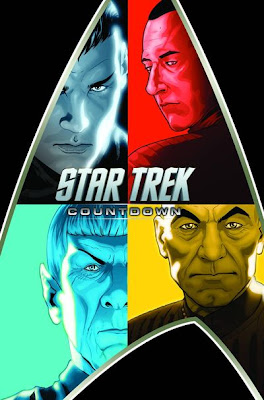
The Best of Star Trek: The Next Generation (1994) collects issues 5, 6, 16, and Annuals 1 and 2 from volume 2 of DC Comics’ Star Trek: The Next Generation. It includes three stories by longtime Star Trek writer Michael Jan Friedman and one by John de Lancie (who played Q in various Trek series), with art by Pablo Marcos, Gordon Purcell, Matt Haley, Peter Krause, and Carlos Garzon. In this collection, Geordi and Riker encounter old flames, Dr. Crusher has a birthday, Picard turns into a goat and has another encounter with Q, and Riker teaches a history lesson. TNG writer and producer Jeri Taylor has contributed the book’s introduction, wherein she talks about her involvement with the show and says virtually nothing about the comics.
Somewhat surprisingly, de Lancie’s story (“The Gift”) is the most interesting, although it takes its sweet time to get going (not surprisingly, it prominently features Q). Friedman’s stories are adequate at best – they would have made for fairly mediocre television episodes. Exacerbating the problem are the flow issues in Friedman’s stories – the comic book medium doesn’t lend itself well to the amount of exposition that a typical TNG story features.
The art here is decent – characters are mostly recognizable and don’t suffer too terribly from comic book over-muscleization. The book is garishly colored, though, in the manner of the day, and the backgrounds (which often feel somewhat sparse) suffer as a result.
So these are the “best” stories this series had to offer? Really? DC’s Star Trek: The Next Generation ran for 80 issues plus 6 annuals. If these stories are the best, then the comic must have been poor indeed.
TAKE IT OR LEAVE IT



